Pump replacement in the well: typical problems and their
In this article, we will look at the most common problems that can be encountered when trying to replace a well pump on our own. Of course, as far as possible, we will show their solution.
Nuance: it is implied that the reader does not possess either special skills or equipment for lifting the pump. In the most problematic cases, alas, you still have to turn to professionals.
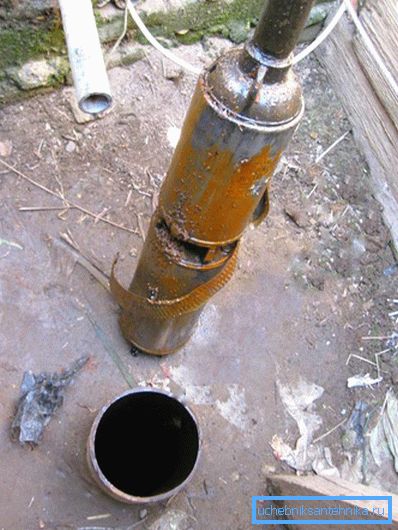
It is easy to lower the pump into a working well; problems usually arise when lifting an old pump.
Pump wedged with electrical cable
Cause
When the pump was lifted, the electrical cable formed a loop that overlapped through the pump and fell between it and the walls.
Tip: To prevent this from happening, it is sufficient even when installing the pump to pull off the cable, hose and cable with cable ties.
Decision
- Push the pump down a little. With a certain luck, it is enough to push the hose down; In addition, if it is stuck shallowly, you can use any available material - pipe, fittings - to push it through. Avoid high forces when moving up or down: you can damage the pump and casing, especially if it is plastic, or break the cable.
- Choose slack cable. It would be a good idea to pull it off with a hose and cable clamp.
- Raise the pump, avoiding great effort.
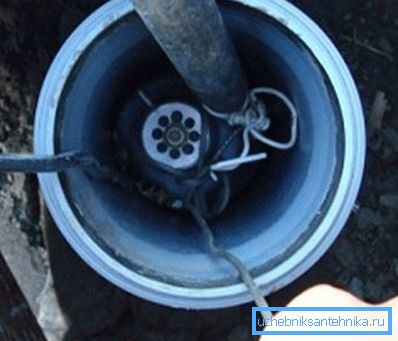
Pump silted
Cause
This problem is typical for wells that have not been exploited for a long time. Groundwater continues to flow through the filter, even if the water is not pumped out. The level of sludge a couple of meters above the pump is an absolutely real picture.
Decision
In this case, the pump raises the pumping pressure by successively tightening the cable and loosening it. It is possible and even advisable to pull the cable and cable at the same time, preventing them from dangerous tension.
The main thing - to tear the pump from the bottom so that under it went the water from above. It will gradually erode the sludge during alternate lifting and lowering of the pump.

Pump when lifting rests against an obstacle
Cause
The casing pipe was flushed when the ground was moving or the pipe joint dispersed. As an option - there was an influx of slag from welding.
Decision
Try to lift the pump, rotating it between attempts around its axis. If he has not perfect axial symmetry - there is a chance that he will slip past obstacles. (See also the article Cementing wells with their own hands.)
Tip: do not try to break an obstacle with a crowbar on a cable or other heavy object.
Chances to fix the problem are illusory; two scenarios are more real:
- In addition to the pump, one more object will be stuck in the well;
- The cable, hose or cable of the pump will be broken. In the worst case, we get just a fallen pump. You still have to turn to professionals, but at the same time you pay more.
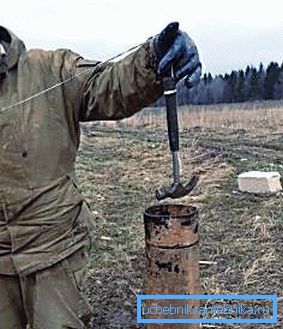
The pump is wedged with a fallen object.
Cause
A screwdriver, a stone or a stick jammed the pump while lifting.
Decision
It seems strange, but such a case is one of the most difficult. The gap between the pump and the casing walls is so small that any object in it will jam the pump almost guaranteed.
All you can do is:
- Lowering the pump on the cable just a few centimeters, try to raise it time after time without much effort.. There is a small chance that a foreign object in the well will turn at a different angle and will not interfere with the lift;
- If not, lift the pump to the maximum height and secure the cable. The smaller the depth at which the pump is stuck - the less work for professionals and the cheaper it will cost you to work.

Lime on the pump and casing
Cause
Drilling in limestone and other sedimentary rocks gives water with a high content of lime. Year after year, it inevitably precipitates on the inner surface of the casing and on the pump itself. As a result, when removing the pump is jammed, moving a few centimeters with great effort.
Decision
And here the only chance - is to try to pull the pump vraskachku, alternating short ups and downs.
Do not flatter yourself: a simple replacement of the well pump in this case will not please you with the result. Even if the old pump was able to be raised - the new one is likely to be stuck when lowering very far from the bottom of the well.
You will have to turn again to the professionals in order to clean the well and wash it from sludge. And only after that install the pump.
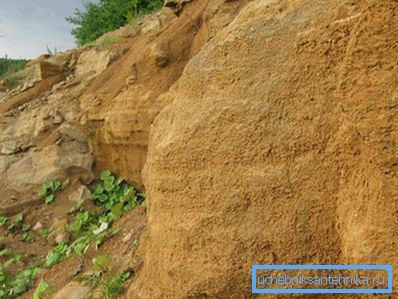
How to avoid problems?
Is it possible to make the pump and well serve for a long time and create a minimum of problems when replacing the pump?
- The cap above the well will protect it from falling foreign objects, and at the same time partly from dust and sand.
- Select a pump with a minimum thickness. More precisely, such that the maximum distance remains between the pump and the casing. An excellent choice, in particular, will be the Danish Grundfoss. (See also the article Which pump is better for a well: how to choose.) Yes, they are more expensive than the same Ukrainian Aquarius at times. However, the cost of the pump is still much less than the cost of a new well. And you may well need to drill a well if the old pump cannot be raised.

- Do not use spliced cables for the pump, and especially cables. Each new connection is a potential problem when removing the pump. They can turn up and jam the pump when removed, or they can simply burst.
- The ideal cable for the pump is stainless steel, with stainless steel bolts and nuts as fasteners. The use of ropes and steel cables is unacceptable: both organic fiber, steel, and synthetics are not very friendly with water. (See also the article How to equip a well: insturktsiya.)
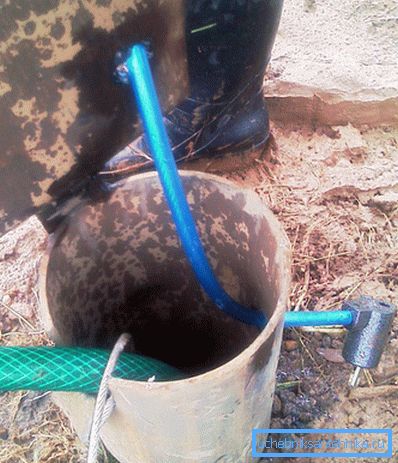
Conclusion
Again: we have considered only cases where problems can be fixed without special equipment. If you do not know exactly what to do, it is better to turn to professionals.